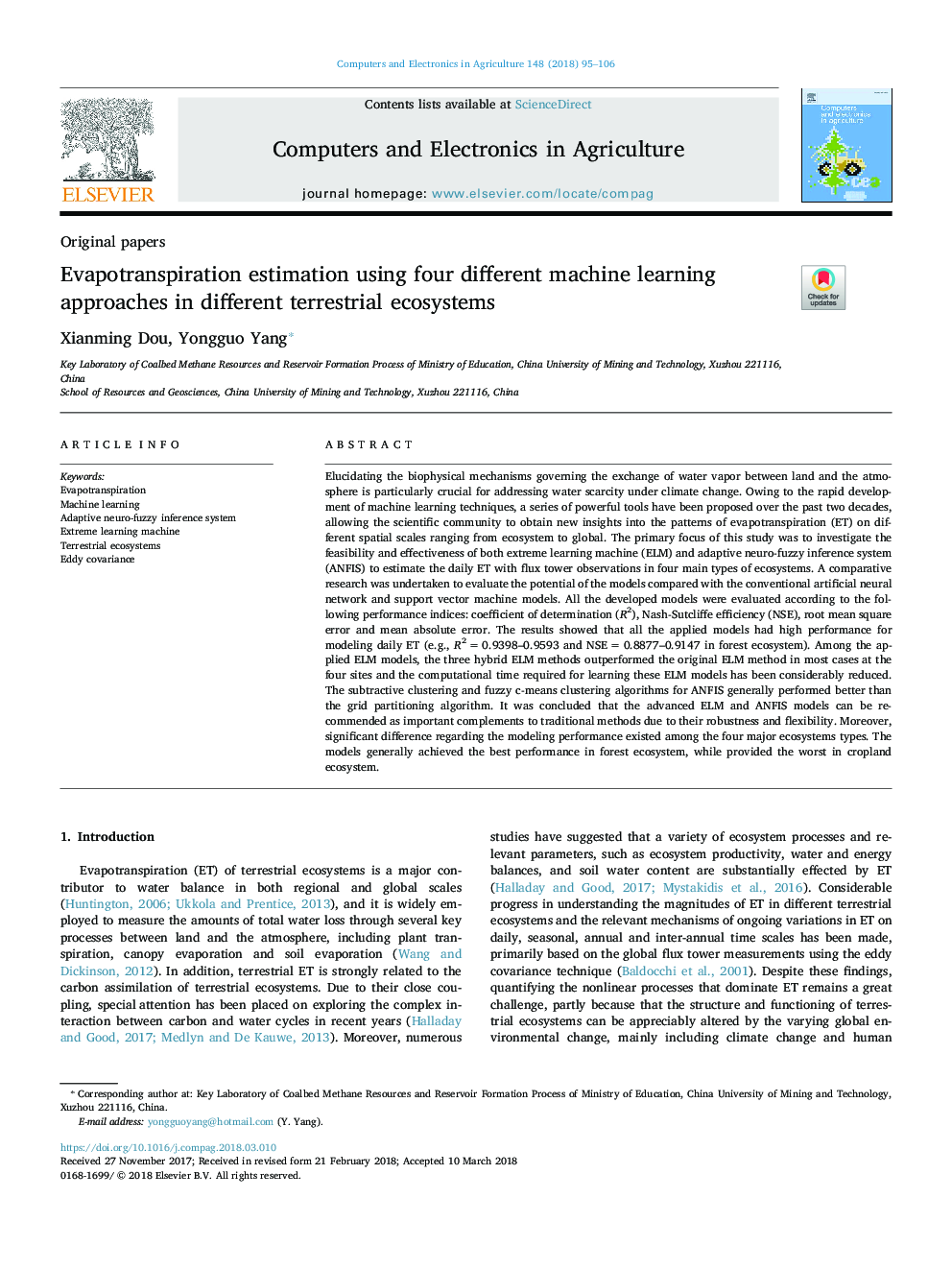| کد مقاله | کد نشریه | سال انتشار | مقاله انگلیسی | نسخه تمام متن |
|---|---|---|---|---|
| 6539524 | 1421100 | 2018 | 12 صفحه PDF | دانلود رایگان |
عنوان انگلیسی مقاله ISI
Evapotranspiration estimation using four different machine learning approaches in different terrestrial ecosystems
ترجمه فارسی عنوان
برآورد تبخیر تعرق با استفاده از چهار روش مختلف یادگیری ماشین در اکوسیستم های مختلف زمین
دانلود مقاله + سفارش ترجمه
دانلود مقاله ISI انگلیسی
رایگان برای ایرانیان
کلمات کلیدی
موضوعات مرتبط
مهندسی و علوم پایه
مهندسی کامپیوتر
نرم افزارهای علوم کامپیوتر
چکیده انگلیسی
Elucidating the biophysical mechanisms governing the exchange of water vapor between land and the atmosphere is particularly crucial for addressing water scarcity under climate change. Owing to the rapid development of machine learning techniques, a series of powerful tools have been proposed over the past two decades, allowing the scientific community to obtain new insights into the patterns of evapotranspiration (ET) on different spatial scales ranging from ecosystem to global. The primary focus of this study was to investigate the feasibility and effectiveness of both extreme learning machine (ELM) and adaptive neuro-fuzzy inference system (ANFIS) to estimate the daily ET with flux tower observations in four main types of ecosystems. A comparative research was undertaken to evaluate the potential of the models compared with the conventional artificial neural network and support vector machine models. All the developed models were evaluated according to the following performance indices: coefficient of determination (R2), Nash-Sutcliffe efficiency (NSE), root mean square error and mean absolute error. The results showed that all the applied models had high performance for modeling daily ET (e.g., R2â¯=â¯0.9398-0.9593 and NSEâ¯=â¯0.8877-0.9147 in forest ecosystem). Among the applied ELM models, the three hybrid ELM methods outperformed the original ELM method in most cases at the four sites and the computational time required for learning these ELM models has been considerably reduced. The subtractive clustering and fuzzy c-means clustering algorithms for ANFIS generally performed better than the grid partitioning algorithm. It was concluded that the advanced ELM and ANFIS models can be recommended as important complements to traditional methods due to their robustness and flexibility. Moreover, significant difference regarding the modeling performance existed among the four major ecosystems types. The models generally achieved the best performance in forest ecosystem, while provided the worst in cropland ecosystem.
ناشر
Database: Elsevier - ScienceDirect (ساینس دایرکت)
Journal: Computers and Electronics in Agriculture - Volume 148, May 2018, Pages 95-106
Journal: Computers and Electronics in Agriculture - Volume 148, May 2018, Pages 95-106
نویسندگان
Xianming Dou, Yongguo Yang,
